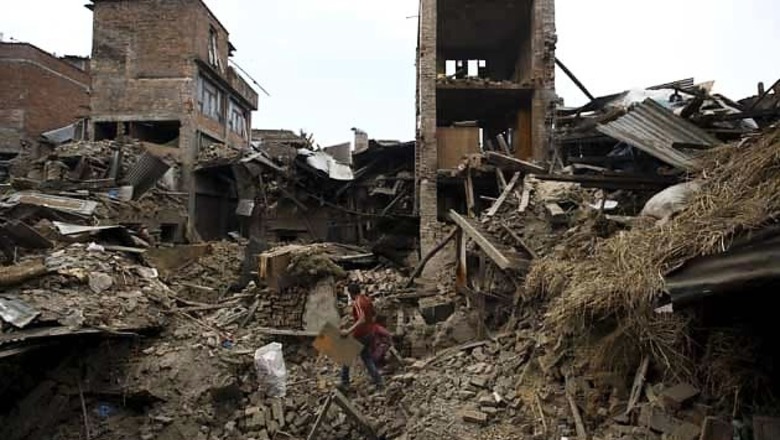
views
breaks free, releasing strain and producing an earthquake.
Los Angeles: Western Nepal and northern India face an increased risk of a future major earthquake, warn scientists who have found that the devastating 7.8 quake that struck Nepal in April released only a fraction of the energy "locked" in the underlying fault.
Using data from the GPS stations, an accelerometer that measures ground motion in Kathmandu, data from seismological stations around the world, and radar images collected by orbiting satellites, an international team of scientists has pieced together the first complete account of what physically happened during the magnitude 7.8 earthquake that struck near Gorkha, Nepal on April 25, killing nearly 9,000 people.
"This is a place that needs attention, and if we had a an earthquake today, it would be a disaster because of the density of population not just in western Nepal but also in northern India, in the Gangetic plain," Professor Jean-Philippe Avouac, from the University of Cambridge, told BBC News.
The researchers show that the earthquake occurred on the Main Himalayan Thrust (MHT), the main megathrust fault along which northern India is pushing beneath Eurasia at a rate of about two centimetres per year, driving the Himalayas upward. Based on GPS measurements, scientists know that a large portion of this fault is "locked."
Large earthquakes typically release stress on such locked faults as the lower tectonic plate (here, the Indian plate) pulls the upper plate (here, the Eurasian plate) downward, strain builds in these locked sections until the upper plate breaks free, releasing strain and producing an earthquake.
The researchers believe that some of this stress has shifted west, to an area stretching from the west of Pokhara in Nepal to the north of Delhi, the report said.
There are areas along the fault in western Nepal that are known to be locked and have not experienced a major earthquake since a big one (larger than magnitude 8.5) in 1505.
The researchers said the new stress that has moved there could already be adding to the tension that has been building up over five centuries. The Gorkha earthquake ruptured only a small fraction of the locked zone, so there is still the potential for the locked portion to produce a large earthquake.
"The Gorkha earthquake didn't do the job of transferring deformation all the way to the front of the Himalaya," said Avouac, also a geologist at Caltech. "So the Himalaya could certainly generate larger earthquakes in the future, but we have no idea when," said Avouac.
The epicentre of the April 25 event was located in the Gorkha District of Nepal, 75 kilometres to the west-northwest of Kathmandu, and propagated eastward at a rate of about 2.8 kilometres per second, causing slip in the north-south direction - a progression that the researchers describe as "unzipping" a section of the locked fault.
















Comments
0 comment